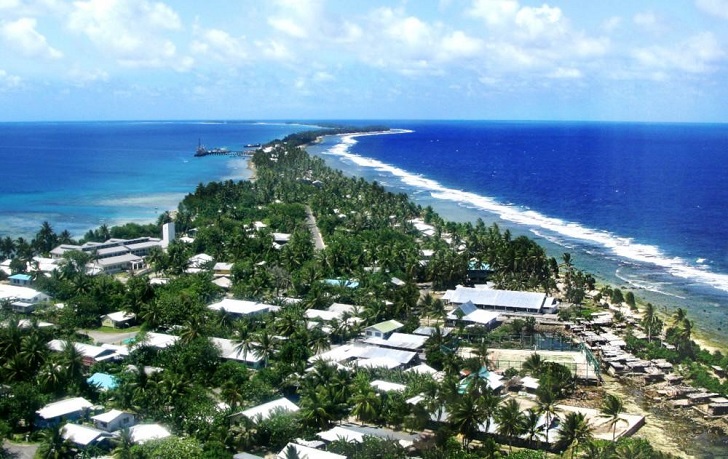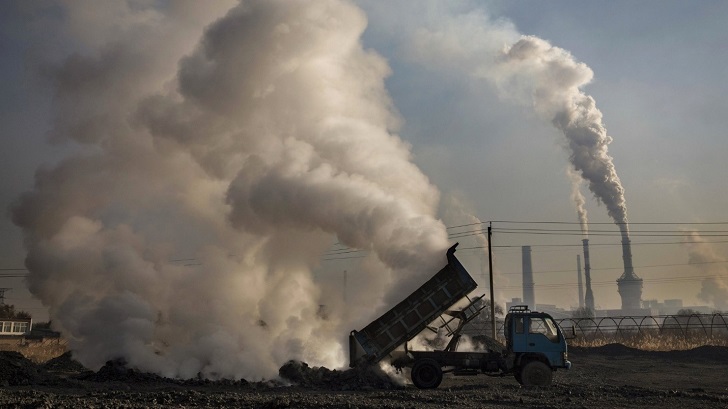
Countries That Release Least Amount of Carbon Dioxide into the Atmosphere

With climate change increasingly becoming the source of global concern, countries have been looking to reduce the amount of carbon they emit into the environment.
Thanks to the Accord de Paris signed in 2016 within the UNFCCC (United Nations Framework Convention on Climate Change), a number of governments have adopted national strategies to reduce their carbon footprint.
And just to be clear, countries that are yet to implement such measures should have plans to do so sooner rather than later if we are to have any hope of getting the better of global warming.
Truth be told, the fact that we use fossil fuels such as gas and oil on a daily basis poses a challenge to the reduction of the country’s carbon footprint, but if others have managed to have it near zero, why can’t we?

Daily use of fossil fuel poses a challenge
Tuvalu Leading the Pack
Have you ever heard of Tuvalu? It is an Oceanian country with a population of less than 12,000. It just so happens that it is the country with the least carbon dioxide emission in the world, with its carbon footprint reading being 0 MtCO2 (metric tons of carbon dioxide).
Instead of using fossil fuels, the country is switching to the alternative wind and solar energy and that Tuvalu has no industries so to speak makes this transition plausible for them. They expect it to be seamless. Despite being a relatively unknown country, they are certainly leading the world in one thing – one that really counts.

Tuvalu has no industries
Niue is another relatively unknown country with a population of less than 2,000. Being an island located in the South Pacific Ocean, their industry involves processing fruit that grows there. They therefore don’t consume fossil fuels, and that why their carbon reading is <0.1 MtCO2, coming second to Tuvalu.
At number three is Nauru, another island country. It is located in Oceania, and its carbon emission rests at 0.1 MtCO2. Unfortunately, this could be the only positive thing to say about the country as the island’s economy is failing terribly, and the citizens live in extreme poverty. Foreign aid is what keeps them afloat, but the poor standards of living translate to most of the citizens passing on before they turn 60.
Next comes Kiribati, a sovereign state in the central Pacific Ocean. With a population of just over 110,000 that is closely knit, the country releases 0.1 MtCO2 annually. With tourism, fishing, and crafts being their main sources of income, you understand how the country manages to keep their carbon footprint in check.
Tonga’s Focus
Tonga, another country in Oceania has a similar carbon footprint to Nauru and Kiribati. They also rely on fishing and tourism to earn a living, and you don’t need to use nonrenewable energy for this, do you? And although they already emit a very small amount of carbon dioxide to the environment, Tonga focused on reducing it even further.
Now that we’ve seen those countries with the least amount of carbon emissions, can you guess those with the highest? Naturally, they have to be highly industrialized, bringing China and the United States to mind.

China has the highest carbon footprint in the world
These two come first and second on that list, with a carbon footprint of 9,839 MtCO2 and 5,270 MtCO2 respectively. Next comes India with its 2,467 MtCO2, followed by Russia which releases 1,693 MtCO2 every year. Japan completes the top five list, registering a reading of 1,205 MtCO2.
More in Business
-
`
The Push for Tax-Free Tips in America – A Win or a Risk?
Tipping has long been a fundamental part of the American service industry, providing essential income for millions of workers. However, the...
February 20, 2025 -
`
Matthew Perry Foundation Launches Addiction Fellowship at MGH
The impact of addiction on individuals and families is profound, and the need for specialized medical care in this field has...
February 13, 2025 -
`
Celebrity Couples Who Have Ended Their Relationships in 2025
2025 has already seen its fair share of celebrity breakups, and the year is just getting started. From heartfelt announcements to...
February 6, 2025 -
`
How Trump’s Policies Will Reshape Artificial Intelligence in the U.S.
The United States witnessed a significant political shift as Donald Trump took the presidential oath once again. His return to the...
January 31, 2025 -
`
Millie Bobby Brown Shuts Down Age-Shamers with a Powerful Message
From the moment Millie Bobby Brown first appeared as Eleven in “Stranger Things,” she captured hearts worldwide. But growing up in...
January 25, 2025 -
`
Why Outsourcing Payroll Services Is a Smart Business Move
Managing payroll is no small task—it’s a crucial part of any business that ensures employees are paid accurately and on time....
January 15, 2025 -
`
These AI Stocks Should Be on the Watch List of Investors in 2025
The buzz around AI stocks is growing louder than ever. With artificial intelligence shaping industries like healthcare, finance, and tech, smart...
January 8, 2025 -
`
Why the Starbucks Workers Strike Is Expanding Across U.S. Cities
The Starbucks workers’ strike has gained significant momentum, with employees in more U.S. cities joining the movement to address unresolved issues...
January 2, 2025 -
`
Are Shawn Mendes and Camila Cabello Still Close After Breakup?
The connection between Shawn Mendes and Camila Cabello continues to intrigue fans worldwide. Their shared history, from chart-topping collaborations to a...
December 24, 2024















You must be logged in to post a comment Login